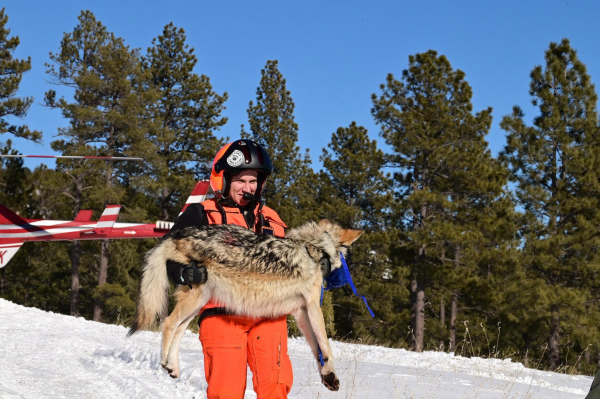New study shows abundant high-quality wolf habitat in Mexico

Analysis reinforces the importance of Mexico for recovery of endangered Mexican wolves
PHOENIX – A peer-reviewed scientific paper published last week in the conservation journal Diversity and Distributions demonstrates that the Mexican wolf’s historical range in the southwestern U.S. and Mexico contains ample high-quality habitat to focus recovery efforts within that range.
The research, a multi-year collaboration between Mexican and U.S. scientists, is significant because it supports the 2017 Mexican Wolf Recovery Plan and contradicts the contention of some advocacy groups that Mexico does not include enough adequate habitat to support recovery efforts there.
Benefitting from new mapping data and cutting-edge habitat analysis methods, the research is the first to include an evaluation of prey biomass across the landscape — a critical element to assure sustainable wolf populations for the future. Besides the area occupied by the current central Arizona and New Mexico population of Mexican wolves, two other large areas of high-quality wolf habitat were identified in the Sierra Madre mountains of Mexico, which mirror areas defined by Defenders of Wildlife in their 2006 publication “Places for Wolves.”
“This habitat analysis provided the foundation for the current Mexican Wolf Recovery Plan and will guide continued collaborative recovery efforts with Mexico,” said Clay Crowder, AZGFD assistant director, wildlife management division. “Mexico contained 90% of the Mexican wolf’s historical habitat, so it is unjustified to force recovery entirely in the United States. Efforts to recover Mexican wolves north of historical range, as some have advocated, are not only unnecessary but against federal 10(j) regulations, because suitable habitat exists within historical range.”
“As part of many other binational conservation efforts, this analysis provides key information showing where Mexican wolves have the highest probability of thriving,” said the project’s lead scientist, Dr. Enrique Martinez-Meyer of Universidad Nacional Autónoma de México.
Recovery efforts are well underway in both countries with a minimum of 163 Mexican wolves in the U.S. and about 30 in Mexico.
This research was a collaboration between scientists and biologists from the UNAM Universidad Nacional Autónoma de México, Universidad Autónoma Metropolitana, UAQ Universidad Autónoma de Querétaro, Arizona Game and Fish Department, New Mexico Department of Game and Fish, University of Arizona, and the U. S. Fish and Wildlife Service.






